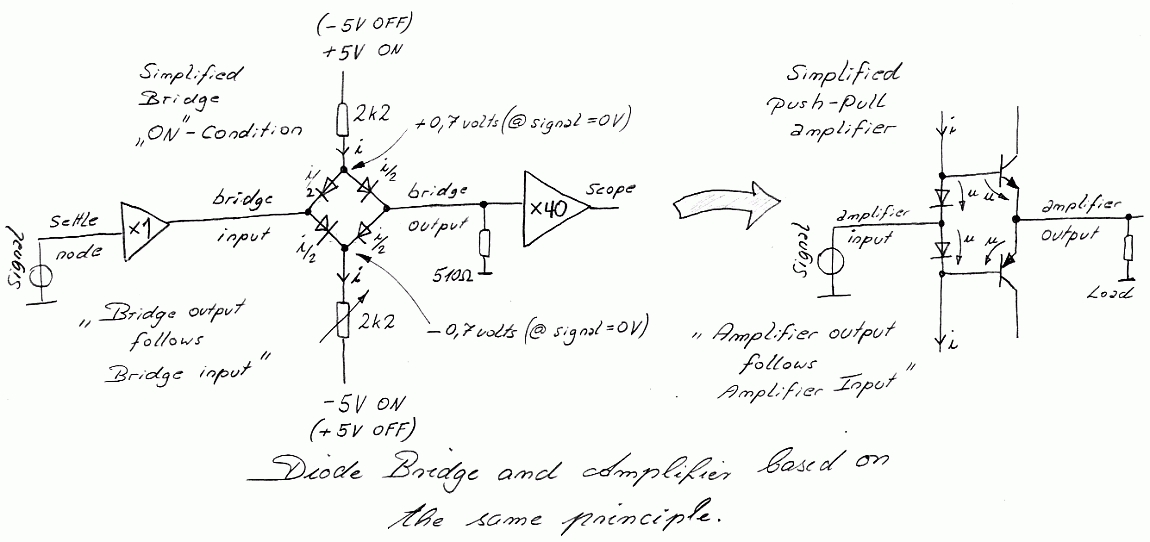
They are almost the same, a Push-Pull amplifier and diode bridge sharing similar disadvantages:
|

|
Why using a diode bridge and not an integrated analog switch?
The analog switch has higher capacitances between input and output than a diode bridge network, this digital feedthrough will cause a transient peak during switching. The occuring parasitic transient peak will be amplified with a high Gain of 40 and therefore this switching peak should be low as possible. A switched monolithic diode bridge network cause only less digital feedthrough in comparison with a standard switch. This measurement circuit should not overdrive the oscilloscope with an amplified feedthrough peak, therefore it is a design target using lowest feedthrough elements. For example when using an integrated switch, the amplified feedthrough peak would highly overdrive the oscilloscope when observing the very small final signal settling. An highly overdriven oscilloscope amplifier trace take too much time to come back to its normal behaviour, most scope amplifiers are not specified under this condition, this is the reason why its better to avoid such a condition by the measurement circuit design from the beginning. During "OFF" condition the scope measures:
Problems in the Switched Diode Bridge:
Layout*** Problems with:
Why clamping with a pair of schottky diodes?Unfortunately a Schottky diode has a forward voltage of 300-400mV under approximately 3mA settle node current. An ideal diode with a extreme low forward would allow a better viewing without overdriving the oscilloscope.Comparison of Different Diode Forward Voltages:
DECREASED VOLTAGE - INCREASED PROBLEMS
There is no diode with a very low forward voltage. I thought even about tunnel or backward diodes - nothing. Heating diodes cause much reverse currents. Another idea is an easy controlable variable gain amplifier with excellent settling. I even thought about multipliers and Gilbert Cells.
No matter, first I try the diode bridge, getting experience.
- I am still a beginner in measuring
settling time when writing chapter 1 -
|
